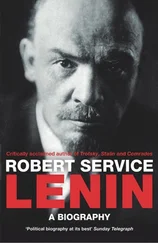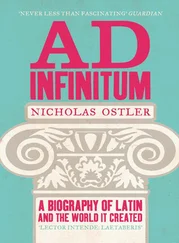1 ...8 9 10 12 13 14 ...39 The list of those who have been proposed as Lenin’s ideological precursors is long, and it starts with the radical nineteenth-century philosopher Nikolai Chernyshevsky. Arrested in 1862 for seditious agitation, Chernyshevsky was to spend the next twenty years in prison and in Siberian exile, where he served seven years of hard labour. Before his deportation from St Petersburg, however, he managed in 1864 to write his novel What is to be Done? and to have it smuggled out and published. It was to inspire an entire generation of Russian youth with ideas of self-emancipation and the duty to bring knowledge to the peasants. Other suggested early sources of Lenin’s revolutionary awakening include various Populist thinkers and Plekhanov’s Marxist ‘Emancipation of Labour’ Group. It is interesting to note what Lenin himself thought of the origins of his political thinking. In an essay on Lenin in 1933, Karl Radek, a brilliant pamphlet-writer and juggler of paradoxes, wrote: ‘When Vladimir Ilyich once saw me looking at a collection of his 1903 articles … his face lit up with a cunning grin and he said with a chuckle, “Interesting to see what fools we were.”’ 33
The sources of Lenin’s political outlook were complex, and there can be no argument about the formative effect of his brother’s death, which sent a ray of white light through the prism of his mind, a ray which, to paraphrase Winston Churchill, was refracted by that prism into red. 34 The ‘prism’ was in fact a constellation of circumstances. The first of these was the government’s treatment of Vladimir and his family. When Lenin entered Kazan University in 1887, he went with a glowing testimonial from his headmaster in Simbirsk, Fedor Kerensky, who wanted to protect him from adverse association with his brother’s notoriety: ‘Neither in school nor outside did Ulyanov ever give occasion, either by word or deed, to arouse an unfavourable opinion among the school authorities or his teachers.’ 35 Even when Lenin was expelled from the university in the December of his first year for taking part in a student demonstration, Kerensky, both to defend the young man and to justify his confidence in him, wrote: ‘[Vladimir Ulyanov] might have lost the balance of his mind as a result of the fatal catastrophe that has shattered the unhappy family and, no doubt, has also influenced the impressionable youth disastrously.’ 36 But on the first occasion when Lenin attended a student meeting, during his first term at the university, he had already been ‘marked’ by the authorities.
The administrator of the Kazan educational region noted that, two days before the demonstration took place, ‘Ulyanov was up to no good: he was spending his time in the smoking-room, chatting and whispering …’ It seems that the ‘demonstration’ amounted to little more than running up and down a corridor, 37 but in view of the fact that he was the brother of a condemned ‘state criminal’, Ulyanov was not merely expelled but also sent away from Kazan to the family estate at Kokushkino.
By labelling him as unreliable and suspect, the expulsion effectively excluded the young Lenin from the state educational system altogether. When his mother applied for him to be reinstated at Kazan, the Director of the Police Department in St Petersburg, P.N. Durnovo, noted, ‘We can scarcely do anything for Ulyanov.’ 38 The Director of the Education Department was more emphatic: ‘Isn’t this the brother of that Ulyanov? He’s also from Simbirsk high school. Yes, it’s clear from the end of the document. He should certainly not be admitted.’ 39 By thus ostracizing him, the tsarist authorities were steadily narrowing Lenin’s range of choices. His solidarity with his dead brother became more firmly fixed. The letters he wrote, in which he respectfully requested ‘Your Excellency’s permission to enter the Imperial Kazan University’, or had ‘the honour most humbly to request Your Excellency to allow me to go abroad to a foreign university’, and which he signed ‘Nobleman Ulyanov’, were at first unsuccessful. 40 The spirit of protest grew as the regime rejected him.
Expulsion did not mean Lenin now had to earn his living as a docker or shop assistant, like his grandfather. He was ‘exiled’ to Kokushkino, and the family then moved to their farm at Alakaevka, about thirty miles from Samara. His mother acquired the property of some two hundred acres in early 1889 for the sum of 7500 roubles. Lenin now immersed himself in reading a wide range of Western and Russian social-political literature, including Marx’s Capital . The police kept their eye on him, but he gave them no trouble. Apart from attending an illegal meeting and occasionally seeing some Marxists, it is difficult to find any evidence of the so-called ‘revolutionary period in Samara’. It would be more accurate to describe this time as one of intensive preparation for the examinations to enter St Petersburg University as an external student. By the time he reached the age of twenty-two, Lenin had acquired a first-class diploma from St Petersburg and been accepted as a lawyer’s assistant on the Samara circuit. He was not destined to succeed at this profession and he soon cooled towards the busy life of a defence attorney. The few cases he was given to handle were only petty thefts or property claims, and he accomplished even these with variable success, although he did defend his own interests twice, winning on both occasions. In one case he sued his peasant neighbours for damage to the Ulyanov estate, and, much later, during a period of residence in Paris, he sued a vicomte who ran him over when he was riding his bicycle. His legal career was not something Lenin was ever keen to recall.
Returning to the question of his revolutionary roots, the time at Kokushkino was one of intensive study of the widest range of ideas. In conversation with Valentinov in 1904 in Geneva – one of the many European cities where he spent seventeen years as an émigré, with a brief interval back in Russia during the 1905 revolution – Lenin recalled reading non-stop from early morning until late at night. His favourite author was Chernyshevsky, whose every word published in the journal Sovremennik he read. ‘I became acquainted with the works of Marx, Engels and Plekhanov,’ he stated, ‘but it was only Chernyshevsky who had an overwhelming influence on me, beginning with his novel What is to be Done? . Chernyshevsky’s great service was not only that he showed that every right-thinking and really decent person must be a revolutionary, but something more important: what kind of revolutionary, what his principles ought to be, how he should aim for his goal, what means and methods he should employ to realize it …’ 41
Valentinov suggests that it was Chernyshevsky, who had in Lenin’s own words ‘ploughed him over’ before he had read Marx, who made the young man into a revolutionary. It is a view contested by the Menshevik writer Mark Vishnyak, who pointed out that Lenin read Chernyshevsky a month or two after the execution of his brother, and therefore ‘the soil was ready for ploughing over’, and it was the news of that event, Vishnyak claimed, that gave Lenin the charge he had needed, not Chernyshevsky’s ‘talentless and primitive novel’. 42 These two views boil down to the same conclusion, namely that Chernyshevsky was Lenin’s John the Baptist thanks to the tragedy of Alexander. 43 Chernyshevsky, whatever else Lenin took from him, made it possible for the young man to absorb a profound hostility towards liberalism, as one of his earliest works (1894) shows. ‘Who are the “friends of the people” and how do they fight against the social democrats?’ was published (unsigned) in mimeographed form in St Petersburg, and in it Lenin repeatedly cited Chernyshevsky and called his judgments ‘the foresight of genius’, while the ‘loathsome’ compromise of the ‘liberals and landowners’ could only hamper ‘the open struggle of the classes’ in Russia. 44 He wanted to use Chernyshevsky’s writings in his attacks on the liberal bourgeoisie, particularly in order to expose the existence of ‘an entire chasm’ between the socialists and the democrats. 45
Читать дальше












